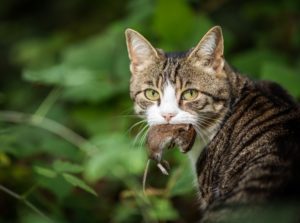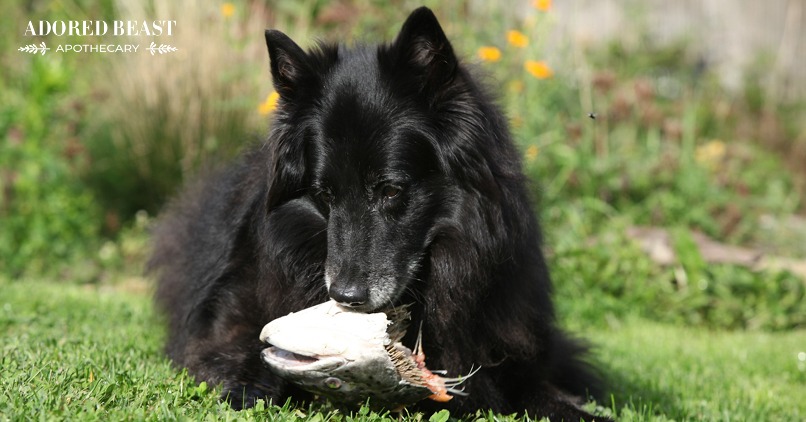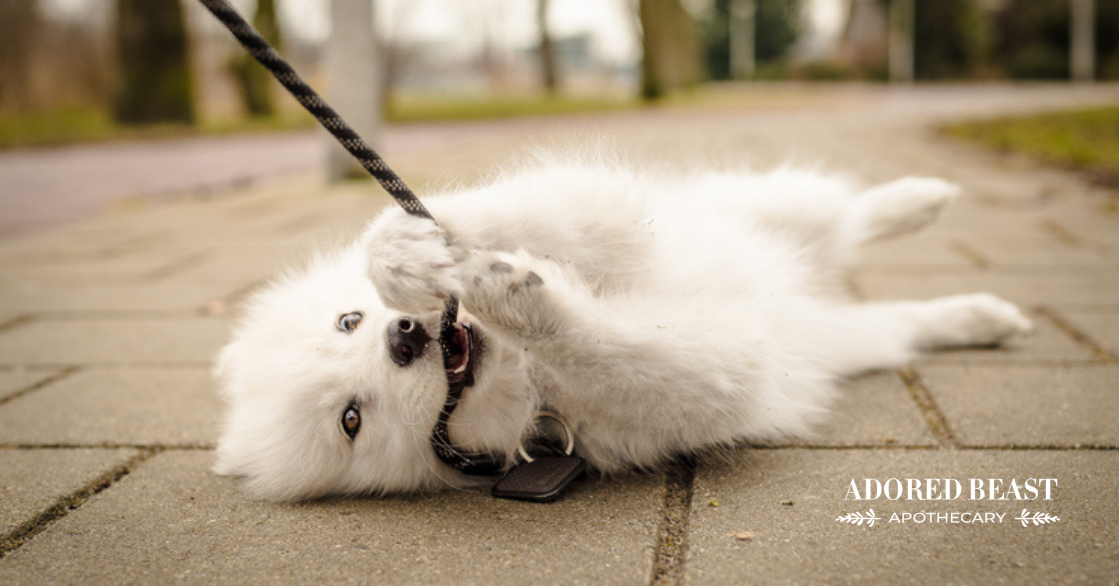I don’t like saying it, but humans tend to make things more complicated than they need to be. So often the answers are right in front of us but instead we look for some huge revelation or scientific breakthrough before we take steps to improve our health. It’s the same with our animals.
Every day we’re learning and unlearning what helps and what hinders and what the best things to feed our pets are to create wellness and prevent disease.
One thing many of us forget about though is balance in nature. When it comes to feeding our furry family healthy, balanced meals, nature has given us the answer. It’s really that simple.
Today I want to talk about organ meat for dogs and cats. Before you get all icky, let me tell you why I believe this is so important.
Organ Meat for Dogs and Cats
In Traditional Chinese Medicine we feed the animal organ to the person whose organ is lacking energy or needs to be healthier. For example, if my kidneys needed support, I would be advised to eat kidney. If my adrenal glands were compromised, I would need to eat the adrenal gland … and so on.
For me, skin issues are my thing. I’m always looking at how to improve skin health. Skin disease plagues so many of our dogs. In the long run it can be as detrimental as cancer because many dogs live a lifetime in distress – and thousands of dogs are euthanized because of it. There are many shelters where the number one reason for animals being surrendered and euthanized is skin disease.
After years of experience, I truly believe that most skin disease is autoimmune in nature, and the cause is predominately an unhealthy gut. So how can we use what we already know about organs in Traditional Chinese Medicine and apply it to the skin? After all, the skin is the largest organ in the body! If the skin is compromised, doesn’t it make sense to feed the vital organ meat for dogs and cats that causes skin to be healthy.
Feeding the Bits and Bites
This is where you may start to get a bit squeamish, and that’s ok, but stick with me. Because we have no real classification for them, the “bits” to me are the things that get thrown out during butchering, parts like:
- skin
- brain
- eyeballs
- testicles
- feet
- beaks
- hooves
- feathers
- hair
- thymus
- uterus
- penises
Now, before you start thinking, yuck, I’m not going to feed those bits to my dog, I want to tell you why I’m such a believer in adding these to the diet.
In animal medicine we often follow human trends. It’s the same with nutrition. Eating sweetbreads (pancreas or thymus gland), brains, tongue and fish eyes is becoming a very hot trend in many upscale restaurants and with health conscious people, especially bodybuilders.
When you look at the nutrients they contain, it’s really not surprising…
The Benefits of Organ Meats
- CoQ10, which is vital for energy production and cardiac function, as well as a potent antioxidant
- B complex vitamins, including B12 and folate
- Minerals, including iron that’s easy to absorb, as well as copper, zinc and chromium
- Quality fats
- Excellent protein
- Choline, another B vitamin, important for cell membranes, brain and nerve function, heart health and prevention of birth defects
- Vitamin E, for circulation, tissue repair, healing, deactivation of free radicals, slows aging
- Vitamin K2
- Amino acids
That’s an impressive list, and all of these vital nutrients should be part of your pet’s diet. But it gets better…
I’m sure you’ve heard about collagen, elastin, and keratin, right?
- Collagen is a part of the connective tissue in the skin that helps in firmness, suppleness and constant renewal of skin cells. It’s vital for skin elasticity and health. Hmmm! It’s also paramount in the health and strength of ligaments, which is another type of connective tissue that attaches two bones and holds the joints together. Collagen is found in muscles, bones, blood vessels and the digestive system. In fact, it’s the most abundant protein in the body. It’s the substance that holds and weaves the entire body together, providing its strength and structure. Do torn cruciate ligaments come to mind? They should!
- Elastin is just like it sounds. It’s the protein that gives the skin the ability to stretch and bounce back. How many of you have allergic dogs and the second they scratch they’re bleeding? This is because they’re lacking elastin.
- Keratin is a fibrous structural protein that protects epithelial cells from damage or stress. Epithelial tissues line the cavities and surfaces of blood vessels and organs throughout the body. There’s a skin disorder in dogs called keratinization – it’s black, thickened elephant-like looking skin.
But Aren’t those Considered Byproducts?
I hear this a lot. When we think of the bits, most of us think about byproducts, but that’s not really the case. These bits are important parts of the whole animal. You wouldn’t say your foot or your liver is a byproduct of your body, would you? Of course not. Society or butchers have named the internal organs offal, but in the wild, a wolf or coyote will eat those parts first.

In fact, after a kill, the Alpha wolf eats first, and it will choose the internal organs first, leaving the muscle meat and flesh for last.
Lions are the same. They’ll eat the gut and internal organs first.
What do they know that we don’t? Well, they know that these organs provide the necessary nutritional requirements, such as vitamins and fat, to thrive.
Why have we imposed our historical ignorance on our dogs? Basically it’s the “out of sight, out of mind” attitude that humans follow when we don’t want to think of something that makes us feel bad. But here are the hurdles and why we need to get over them.
Moving Past the Ick Factor of Organ Meat for Dogs and Cats: 2 Issues
There are two main issues for most people when it comes to feeding organ meat for dogs and cats.
Issue #1: What’s Fit for Consumption?
The abattoir offers a few categories behind its doors.
The first category is human grade. These are the meats that are sold that humans eat. What we have to remember is that there are still plenty of bits coming from healthy animals. Yes, that’s correct. All those steaks and chicken thighs you are grilling had hooves and brains and testicles, beaks, feathers, and feet. And these are valuable and great for your dog to eat!
The second category is not fit for human consumption. To me, that also means not fit for animal consumption either. We’ve heard nightmares of the 4Ds: dead, dying, diseased or disabled animals. 4D meats should not go into anything, but they do. They’re used in many commercial dog and cat foods. It’s thanks to these meats that we’ve come to the conclusion that “byproducts are bad.” These aren’t even technically byproducts though, and while they may include the “bits” I’ve been talking about, it isn’t specially the bits that are not fit for human consumption.
So how do you know what to feed?
Solution: Waste Not, Want Not
Please believe me when I say I am not making light of this. I’ve been a vegetarian for 30 years and have been fighting against factory farms since I was old enough to voice an opinion. I’ve been a political advocate for the ethical treatment of farm animals for just as long! I can’t stand when people see meat in a store without making the connection of what happened to the animal to get it there. And they’re grossed out by the thought that it came with other parts like a head and feet.
How amazing would it be if they could honour that animal by insisting the entire animal be used and not selfishly wasted because of human stupidity. There is so much waste to the lives of these creatures who give their lives to feed people, our dogs, and our cats As a society, we need to stop being ridiculous prudes and start looking at the ethics, the environment and the actual health benefits of consuming the entire animal.
Issue #2: Percentage
The reason byproducts are so bad is that many of them are in the second category at the abattoir where the 4Ds are found; and nothing should be 80 percent beaks and feet! Just because they’re cheap, many pet food companies use byproducts as their main ingredient.
So, the issue is that those bits are being fed in mass quantities, which means our dogs and cats are not getting the balanced nutrition they need to thrive.
Solution: Balance
When you feed the bits, they should be in proportionate amounts to the animal they’re coming from. In other words, a chicken has two feet, a beak and one brain, and cattle have four hooves, a brain and either two testicles or an udder.
Make sure that if you purchase food that has the bits included, it’s the correct percentage. If you make it yourself you can grind up an entire chicken, or you can ask the butcher to save you chicken feet, organs, cow or sheep hooves that they can chew on … and you can add them in the right proportions.
I’m not saying that tomorrow you should start putting feathers, fur, eyeballs and brains into your animal’s food (of course, you can if you’d like). What I am saying is that it’s food for thought and we should be looking at a third or fourth classification at the abattoir. In this way we’ll create less waste of food animals’ lives and a better environment, while giving our carnivores a really complete species-appropriate diet that supports the skin health.
Things can be so simple if we just look to nature for our answers.












![[RESEARCH] Is Herbicide Safe for Dogs?](https://blog.adoredbeast.com/wp-content/uploads/2025/06/herbicides-safe-for-dogs-103x55.png)